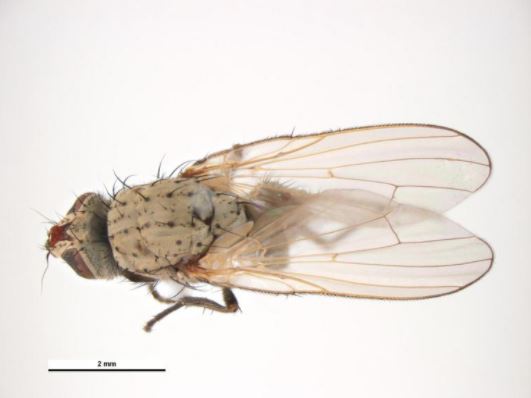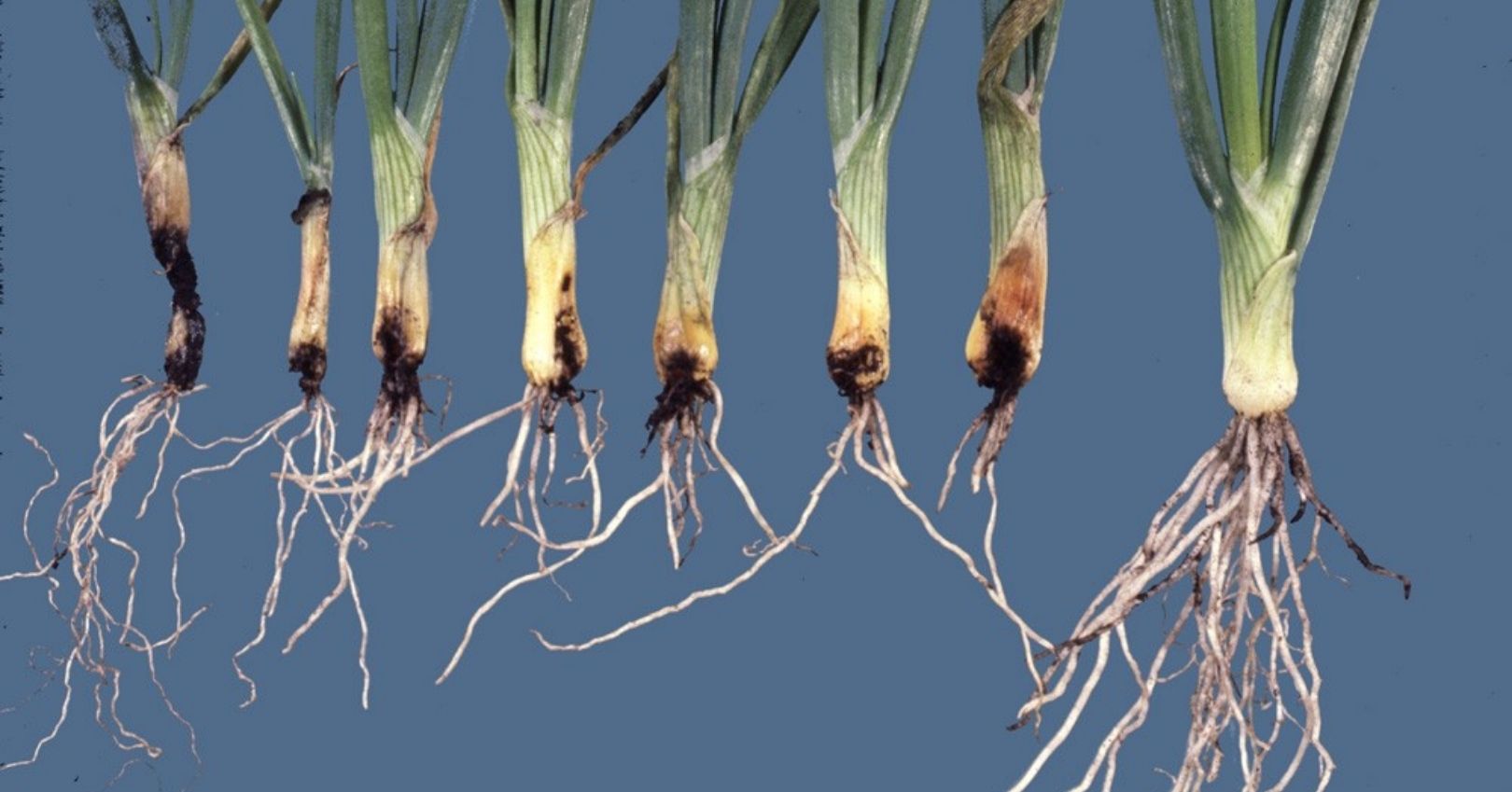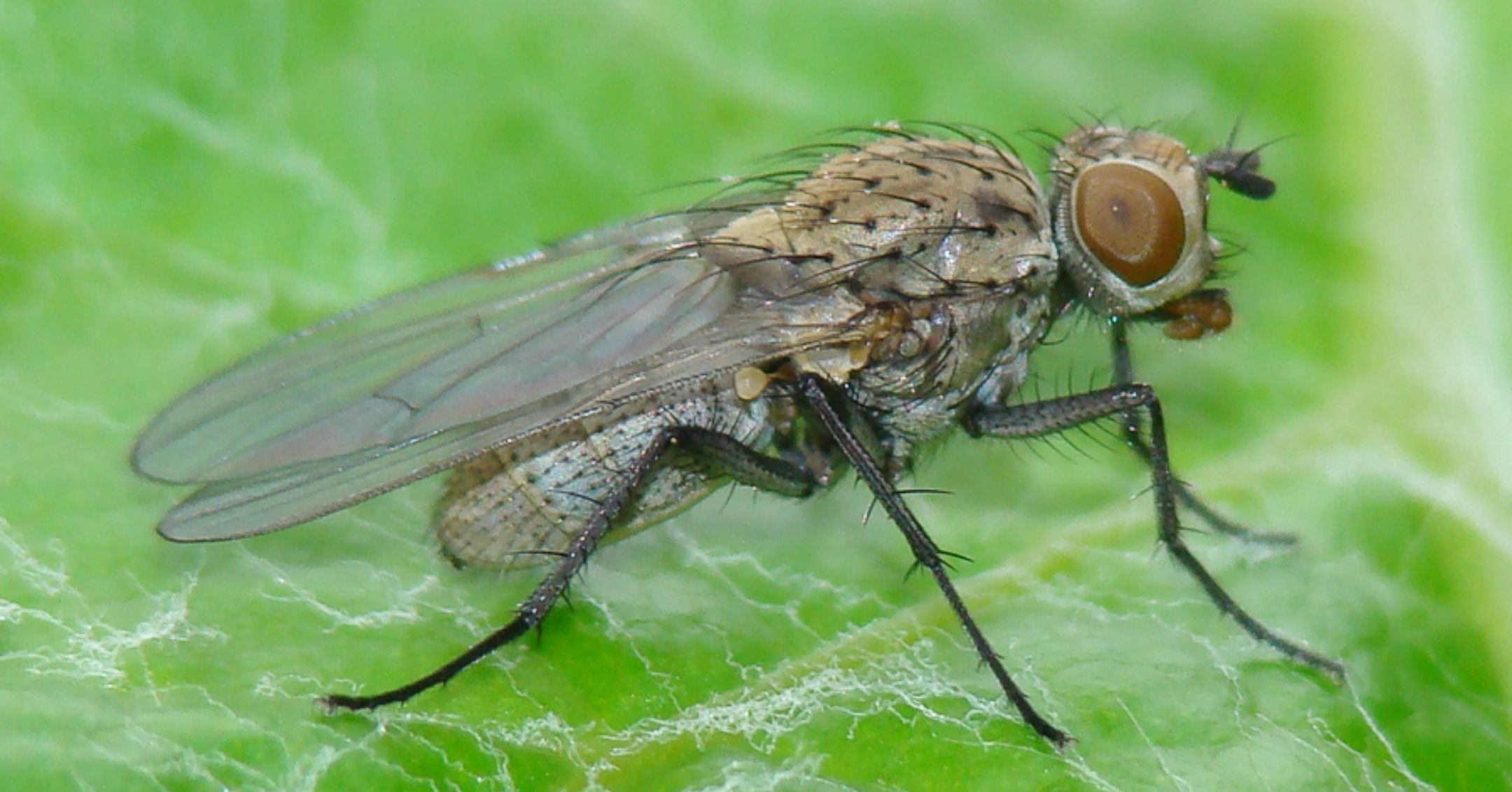Root Maggots
Onion Maggot




Description
Adult: Onion maggot flies are small, about 0.25 inch (6.35 mm), with brownish-grey bodies, and largewings. They resemble houseflies, but have longer legs, are more slender, and overlap their wings while at rest.
Egg: White, elongated, about .03 inch (0.8 mm). Eggs are deposited in or on the soil, near young leaves, necks, or bulbs.
Larva: Maggots are legless, tapered, about 0.3 inch (8 mm) long, and creamy-white in color. They have hooked mouthparts for rasping their way into plant tissue and require 2 to 3 weeks to complete development.
Pupa: Chestnut brown, about 0.3 inch (8 mm) long, and may be found 1-6 inches (2.5-15 cm) deep in soil.
Life History
There are normally three generations of onion maggots per year. The first, usually the largest and most damaging, generally emerges in mid- to lateMay. Females begin laying eggs 7 to 10 days after emergence. Adult onion maggot flies survive about 2 to 3 weeks during which hundreds of eggs may be laid. Eggs will hatch into maggots within 2 to 3 days. Maggots feed on roots and bulbs below the soil surface for about 2 to 3 weeks and when mature they burrow 1 to 4 inches (2.5 to 10 cm) deep to pupate. First and second generation pupae remain in the soil for 2 to 4 weeks before adults emerge. Pupae from the third generation will overwinter in the soil among unharvested onions and culls before emerging as adults in the following spring.
Damage
First generation onion maggot larvae feed on the roots and bulbs of young onion plants, which causes wilting and plant death. One larva typically kills several adjacent onion seedlings during its growth and development. Damage caused by second and third generation larvae is typically less severe (i.e., doesn’t kill the whole plant), since it is more difficult for the larvae to penetrate the developing bulb. However, feeding from later larvae can still result in rotting bulb tissue and provide openings for other diseases, reducing bulb quality and storability.
Seedcorn Maggot
Description
Adult: Seedcorn maggot adults are about 0.2 inches (5 mm) long with gray to brown bodies and are similar in appearance to the onion maggot.
Egg: White elongated; deposited in soils rich in organic/decaying matter and on seeds and seedlings.
Larva: Maggots are legless, tapered, about 0.25 inches (6 mm) long, and yellowish-white in color. Head-ends are wedge shaped with small black mouth hooks.
Pupa: Oval-shaped, dark brown, about the size of a grain of wheat, and found in the soil.
Life History
Adult flies emerge in April and May and begin mating within 2 to 3 days. Females lay eggs in or on soils and/ or on seeds. Eggs hatch in 2 to 4 days at which point the larvae burrow into seeds and feed on emerging cotyledons and plant roots. Mature larvae pupate in the soil and remain in this stage approximately 7 to 14 days. Seedcorn maggots overwinter as pupae. A complete generation takes about 3 to 4 weeks and about 2 to 3 generations occur per year.
Damage
Maggots prefer feeding in soils rich in organic and decaying matter (such as manure). They burrow into the seeds and roots of many vegetable crops, destroy the seed germ, and may cause rot in plant tissue. Damaged seeds are unable to provide adequate food resources to support initial plant growth. Seeds and plants attacked by seedcorn maggots may not emerge causing reduced stands.
Maggot Management
Onion and seedcorn maggot damage is uncommon in Utah due to soils low in organic matter and typical dry, warm conditions in the spring. Any practice that speeds up germination and plant emergence will help reduce crop losses from maggots.
Cultural
- Sanitize fields. Remove or destroy onion culls and debris from fields after harvest and volunteer onions in the spring. Culls and volunteer onions can be burned or buried and should be eliminated before emergence of the current season’s crop.
- Rotate onions with unrelated crops. Onions should be planted at least one mile from previous onion plantings. Maggot populations are generally higher after a legume (e.g., alfalfa, beans, peas) has been plowed into the soil than when a grass (e.g., corn, rye, wheat) is incorporated.
- Delay planting onions in problem field sites. This will shorten the time the flies have to lay their eggs and allow the soil to warm up and dry out.
- Plant more tolerant varieties. No commercial onion varieties are resistant to early or mid-generation onion maggot attacks, but some earlier maturing onions are more tolerant to 3rd generation larvae.
- Handle seeds carefully to avoid cracking the seed coat. A cracked seed coat provides entry points for maggots and other diseases.
- Avoid planting in soils that are high in undecomposed organic matter.
- Plant during fly free periods determined by monitoring.
- Use sticky traps. Yellow sticky cards serve as a monitoring tool to assess pest infestation levels around fields and may serve as a control measure by reducing the amount of adult populations before egg laying occurs.
- Use row covers in small-scale production sites (impractical for large fields). Row covers placed over transplants at the time of planting can reduce egg laying. Cover seedbeds with a floating row cover immediately after sowing to prevent infestation. Be sure the cover extends at least 6” on each side of the seed row. Covers can be removed when plants are big enough to tolerate damage.
Chemical
Seed or furrow treatments with insecticides are effective for preventive measures. An insecticide applied to the soil at planting protects seedlings from damage by first generation larvae. Two common methods that protect onions include an in-furrow application of a granular or liquid insecticide, or planting seed treated with a systemic insecticide. Areas infested with seedcorn maggots may need to be replanted after preventive measures are taken.
Biological
Natural enemies of onion maggots include a rove beetle which destroys fly pupae and is both a predator and a parasite, ground beetles that consume soil stages of the maggots, and some parasitic wasps and flies. Although much of the seedcorn maggot’s life cycle is spent protected underground, naturally occurring fungi may attack and decrease seed corn maggot larval populations. Predation by spiders, ants, and birds upon adults may also occur. Selective insecticides, such as seed treatments, are conducive to allowing these natural enemies to supplement maggot control.

